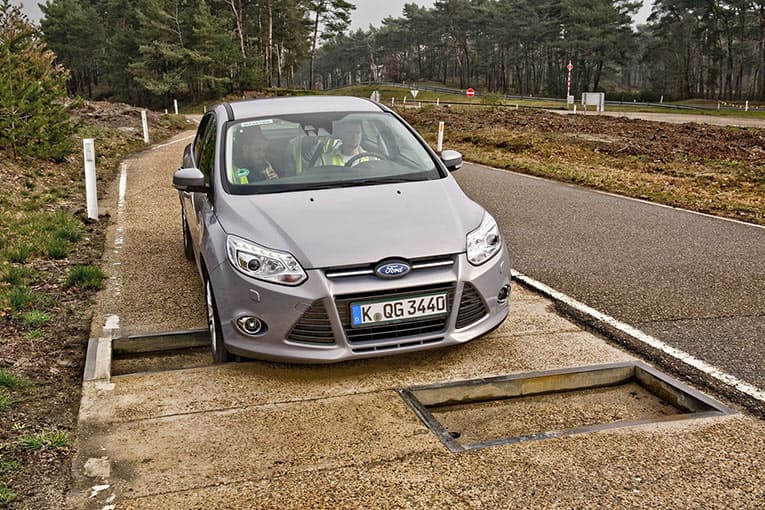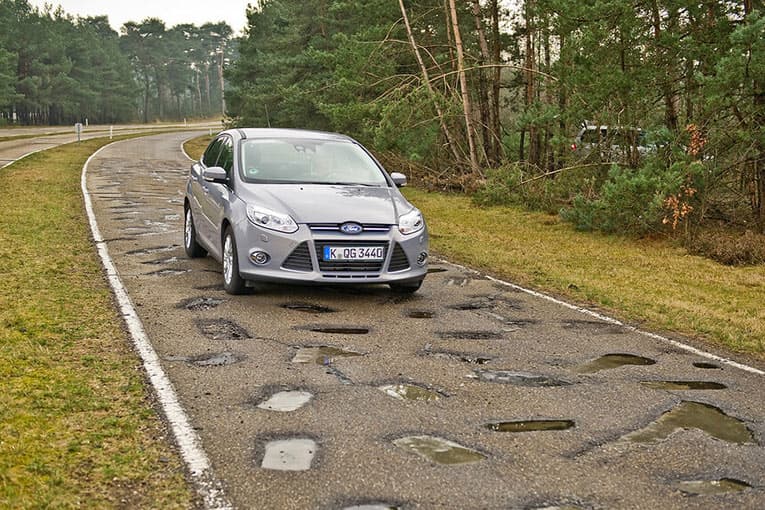Ford engineers know that not all roads are created equal. Some are pockmarked with potholes. Others simply consist of merciless off-road-like tracks. Only a blessed few roads around the world are kind to the vehicles driving over them. To ensure its vehicles can withstand such driving behaviour, the engineers at Ford’s Lommel Proving Ground in Belgium and Michigan Proving Ground in the United States, test vehicles for all global markets.
Several types of road conditions are simulated including moderately rough roads such as those in Europe and North America and severely rough roads like those in emerging markets, taking into account that weather conditions can make these roads even worse. With much of Europe having been gripped by two bitterly cold winters in succession and public spending cuts leaving little money for surface repairs there and in the US, motorists on both continents are driving into spring on roads scarred by potholes and damaged surfaces.

Ford’s Lommel Proving Ground subjects new vehicles to a variety of highly demanding road surfaces and features some 50 miles of test track, many of which are designed specifically to put suspension systems to the ultimate test. “We have created some of the worst potholes in Europe on our own test track. If our cars can pass these tests, then they can cope with almost anything they encounter on public roads,” said Eric-Jan Scharlee, Technical Specialist Durability Testing at Lommel Proving Ground. “You name the road surface, we have it at our proving ground.”
Both the Lommel and Michigan Proving Grounds feature replicated real-life road surfaces from around the world. Visitors to the facility in Belgium, for instance, may be surprised to find road signs indicating they have travelled to France, the UK and US, all within just a few hundred metres, but it is through such painstaking recreation of real road surfaces from across the globe that Ford is able to deliver the products that meet and exceed requirements of real-world drivers.
To recreate realistic road conditions, Ford engineers survey drivers of every vehicle segment in different parts of the world asking them to rate the roads they drive on how they use their vehicles. They then create a statistical profile of the driver, the type of roads the driver uses and his or her driving habits – and apply it to a durability test cycle at the respective proving ground. Using this data, engineers can extrapolate how much load is likely to be placed on the vehicle over the course of its lifetime, telling them how much the vehicle needs to be able to withstand.
“The challenge for a suspension system is when it exits the pothole,” said Simon Mooney, Test Engineer Road Load Data, at the Dunton Technical Centre, Essex, UK. “The impact can be like hitting a kerbstone. We test all the wheel and tyre sizes that we produce for our vehicles to their limit so we’re confident they can cope.”
Chassis and suspension testing for passenger cars is conducted in two phases, with the first phase designed to simulate the extreme demands placed on the vehicle’s suspension and major structures over the course of its lifetime. During the second phase the emphasis shifts to the entire vehicle, including high speed and rural road driving simulations. During these tests, high-tech equipment is used to record the loads and strains placed upon suspension components. The specially adapted wheel and suspension monitoring equipment fitted to so-called ‘Road Load Data Acquisition’ vehicles can amount to €125,000 per corner, combining with the sophisticated data recording and processing equipment inside the car to make such vehicles worth in excess of €1 million.
“We use specially instrumented wheels on the car which measure the force and corresponding moments in three directions. On some vehicles there are various sensors totalling some 200 extra channels through which to get the data,” says Mooney










